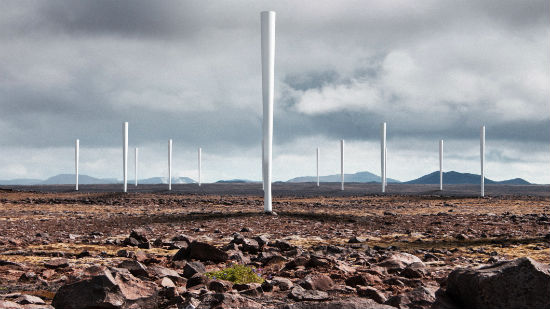
Deepwater Wind, a wind power developer, proposed a 1,000-megawatt wind farm in a spot between Rhode Island and the eastern end of Long Island in New York.
Their towers would be so huge, their blades rising 500 feet above the water’s surface, that they would be separated by seven- or eight-tenths of a mile, and thus would cover 270 square miles.
The farm would be connected to the grids of both New England and New York and could become a conduit for relatively low-priced electricity in the north to flow into the higher-priced New York market. William M. Moore, chief executive of Deepwater Wind said that: “Transmission projects are complicated, but they make an awful lot of sense’’. A power line running from the offshore turbines to one point on shore would be mostly unused the majority of the time because the wind machines seldom turn at full capacity, he said.
The Department of Energy has designated the land area that such a cable would bypass, Connecticut and part of New York State, as one of the two most congested, electrically speaking, in the United States. The other one covers parts of California and Arizona. New technology has made offshore cables more practical.
In some ways, the project’s logic echoes the rationale for the Atlantic Wind Connection, a proposal for a transmission backbone that would run down the Atlantic Coast from New Jersey to Virginia.
Mr. Moore said the proposed wind farm would be financed and built in phases, with 40 or 60 machines going up each year. The machines would generate 5 or 6 megawatts each. (By comparison, giant wind machines on land are generally 1.5 megawatts. A megawatt is enough to run a Super Walmart.). The offshore depths are 90 to 160 feet, modest by oil drilling standards but very deep for wind. This would require building platforms that look a bit like bar stools, Mr. Moore said, with a standard “monopole” rising from the platform.
The rotor’s diameter would be 400 feet, so that when a blade pointed straight up, it would rise more than 500 feet above the water’s surface. Building huge machines makes economic sense at sea, where each platform is expensive and where giant blades can be delivered by barge, experts say. They are too long to move on most roads.
Along with huge machines, advocates say that what offshore wind power needs to succeed is a sort of critical mass, the promise of enough investment that onshore industries will spring up to manufacture the parts in enough volume to push costs down. “Offshore wind is clearly building momentum, which means more momentum for green jobs and lower prices for wind energy,’’ said Jacqueline Savitz, an analyst at Oceana, a non-profit environmental group in Washington that recently published a study of the potential for Atlantic wind.
The project’s large scale could bring down the unit costs, wind proponents say. A farm with wind machines of that size was recently approved for the coast of Belgium, Mr. Moore noted. Building the wind farm would cost $4 billion to $5 billion; the transmission line, which would be 150 miles long, would cost another $500 million to $1 billion, he said.



